
The Observables Properties pane provides a graphical editor with drop-down menus to specify and edit
Observables used in
Rule-Based models.

An Observable consists of one or more Species Patterns. Each observable selects species that match at least one of the species patterns. Observables are defined within each compartment within a model.
A species pattern defines common features of multiple species, and consists of one or more of the molecules that compose a species. Molecules may or may not be explicitely connected, but must be present in every species selected by the species pattern. Sites that have multiple possible states are depicted with a small yellow ball above the site.
In the figure below, the Observable describes the total extent of phosphorylation of all EGFR molecules. The first species pattern selects all species that have the tyrosine at position 1068 (Y1068) phosphorylated, the second species pattern selects all species that have the tyrosine at position 1148 (Y1148) phosphorylated.
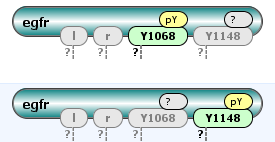
Add an observable using the New Observable button at the bottom of the main workspace. A dotted shape will appear in the Object Properties tab of the properties pane. If the model has more than one compartment, the compartment must be selected when the Observable is created, and only molecules within the compartment can be added to the Observable. (Note that a parameter can be created to sum Observables from different compartments if needed).
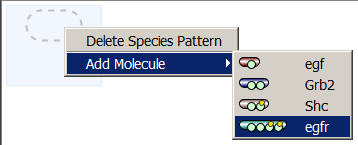

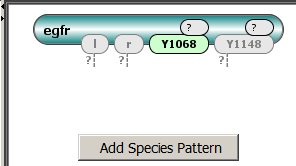
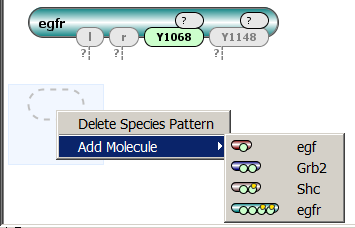
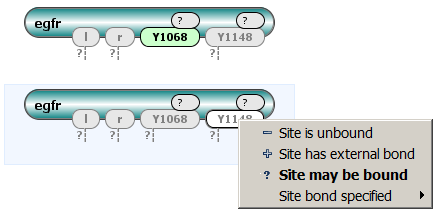
Select between a Multimolecular pattern or Polymer patterns using the radio buttons on the left side of the Observables Properties pane. Polymers (such as actin filaments) can have patterns that describe an either an absolute number of monomers in the polymer, or a length greater than a specified number of monomers; radio buttons on the left of the Observables properties pane select between these options.